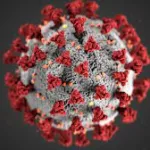Louisville, KY – A groundbreaking study from the University of Louisville’s Green Heart Louisville Project has revealed that increasing the number of trees and shrubs in neighborhoods can significantly lower inflammation levels among residents. This innovative research highlights the profound impact of urban greening on public health, suggesting that adding trees may offer a natural and effective way to combat chronic diseases.
Launched in 2018 by the Christina Lee Brown Envirome Institute in collaboration with The Nature Conservancy, Washington University in St. Louis, Hyphae Design Laboratory, and other partners, the Green Heart Louisville Project aimed to explore the health benefits of enhanced greenery. Modeled after clinical trials, the project tested whether adding large trees and shrubs to certain neighborhoods would improve residents’ health.
At the start of the study, researchers collected comprehensive health data from 745 participants, including blood, urine, hair, and nail samples, in a four-square-mile area of south Louisville. They also assessed the initial levels of tree coverage and air pollution. Following this, over 8,000 large trees and shrubs were planted in designated areas, while adjacent neighborhoods served as controls.
The results were compelling. Residents in the newly greened areas showed 13-20% lower levels of high-sensitivity C-reactive protein (hsCRP), a biomarker associated with inflammation and an increased risk of cardiovascular disease, diabetes, and certain cancers. This reduction in hsCRP corresponds to a nearly 10-15% decrease in the risk of heart attacks, cancer, or mortality from any disease.
“The Green Heart Louisville Project is a prime example of how innovative and collaborative research can make a tangible difference in community health,” said UofL President Kim Schatzel. “These results not only underscore the aesthetic value of trees but also their substantial benefits for individual and community health.”
Aruni Bhatnagar, director of the Envirome Institute and UofL professor of medicine, emphasized the significance of the findings. “This study is the first to demonstrate that deliberate increases in neighborhood greenness can improve health outcomes. The results strengthen the case for expanding urban greenspaces as a public health strategy.”
Katharine Hayhoe, chief scientist at The Nature Conservancy, added, “While many understand that nature benefits our health, this scientific validation is crucial. The Green Heart Project’s findings provide robust evidence linking environmental health with personal well-being.”
The project’s success has garnered additional support, with a recent $4.6 million grant from the National Institute of Environmental Health Sciences to continue research over the next five years.
Daniel Riggs, UofL assistant professor of environmental medicine, presented these findings at the 36th Annual Conference of the International Society for Environmental Epidemiology in Santiago, Chile, on August 26. As the study progresses, its implications may drive future urban planning policies, emphasizing the role of green spaces in enhancing public health.











